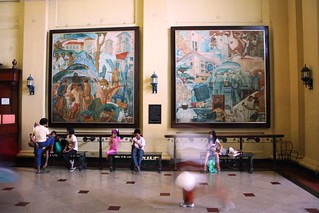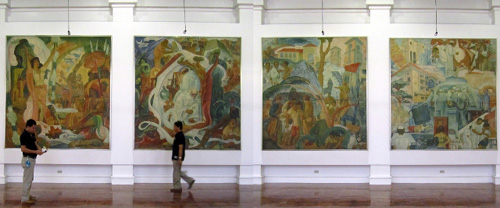
What does the city sound like?*
When one thinks of the city, our first thoughts are visual: the skyline of tall buildings, streets and avenues all lit up with neon. There are more elements which make up the urban landscape other than the visual. The sound of traffic, vendors plying their wares, pedestrians hurrying down sidewalks.
Even more curiously, do all cities and urban areas sound the same? How is downtown Manila different from Las Pinas or the fringes of Rizal beyond Ortigas?
Project Bakawan, through its Sound+Movement component, aims to explore this facet of urban life. Project Bakawan is a collaborative art event seeking to increase awareness of current environmental issues. Set on February 2015 in celebration of the National Art's month, it will engage artists in collaboration with the academic community to formulate an acute analysis of our environmental situation and come up with creative responses that will interact with the UP Diliman community.
Curator Dayang Yraola invites Metro Manila's inhabitants (or passers-by--or anyone, really) to contribute an audio recording of people, events or activity, places recorded from anywhere in Metro Manila.
It could be a recording made using professional machines, mobile gadgets (mobile phone, tablet, etc) or any portable recorders; minimum of 30 sec, maximum of 3 minutes; on AMR, MP3 or WAV format; and not more than 2.5MB.
Please follow this format for your contribution:
Filename: Contributor’s name_Content_Date
Additional notes:
Contributor’s name can be a pseudonym
Identify content as: Nature, People, Machines, Structures, Event, Traffic, Others
Composers and sound artists will use the collected sound files for their individual compositions, which is part of a sound installation in U.P. Diliman for Project Bakawan in 2015. Project Contributors will be duly acknowledged.
Please submit audio files to dyraola@gmail.com with subject heading [Bakawan Audio].
*This reminded me of Jodie Foster's character in The Brave One, where she hosts a radio show about the city life. Alas, i never got around to blogging about it.



